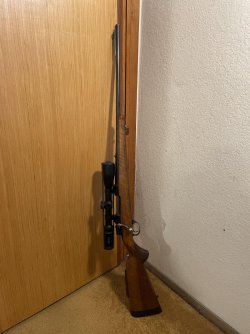ntsqd
Well-Known Member
Generally sound idea. The problem is that the metal sold in those locations isn't truly round, very straight, or at the exact diameter. Instead, buy something like this: Ø1.00 X 12" Linear Motion Shaft $22.84 It is all of those things.Assume the rings are for 1 inch scope. Do not use a scope to validate mechanical alignment. Go to your local hardware store and buy round metal stock in 1 inch diameter and at least 18 inches long (36" good too as you can see obvious errors). With a steel wool <Brillo> pad (fiber leaves fewer filings) smooth and clean the aluminum stock smooth. Care not to take off too much, but enough to not damage rings. The round stock is perfect as a bar to twist rings into base and to get rear base alignment screws centered as a good starting point. With this round stock you can put base bedding, shims, JB Weld, or other attaching devices without ruining your scope. Similar refined stock was sold years ago in scope mounting tool kits.
I have a round top Savage that has a bedded one piece base because even though the screw holes are on-center the action itself is not actually round. This caused the base to tilt and was about .01" low on the left.


